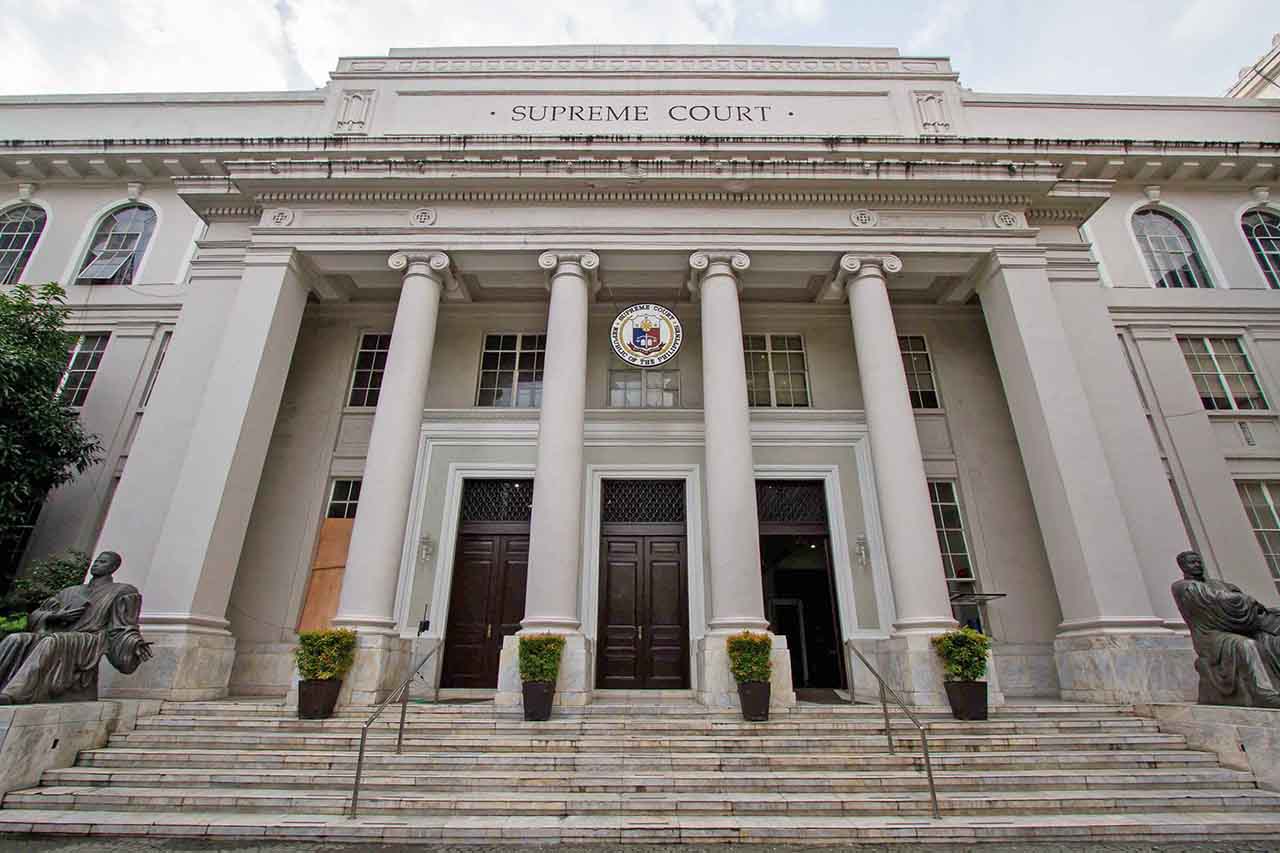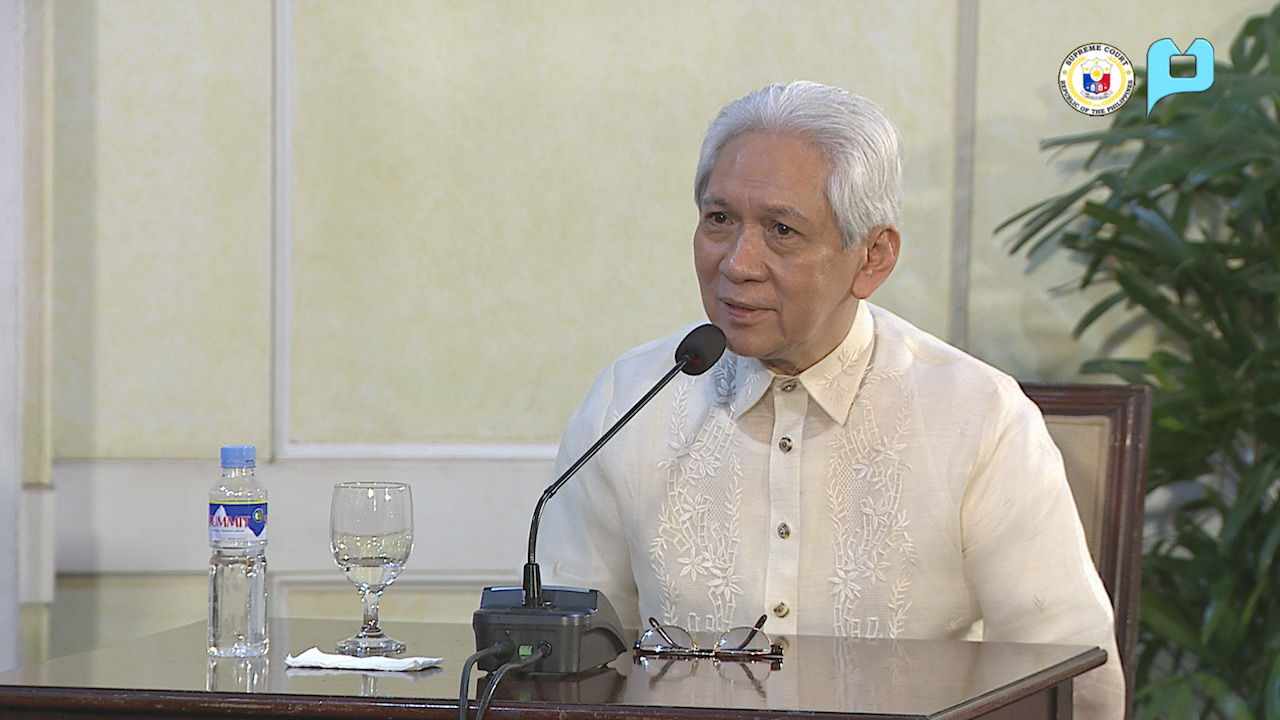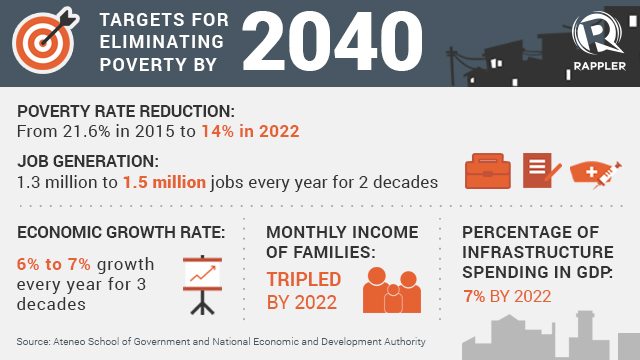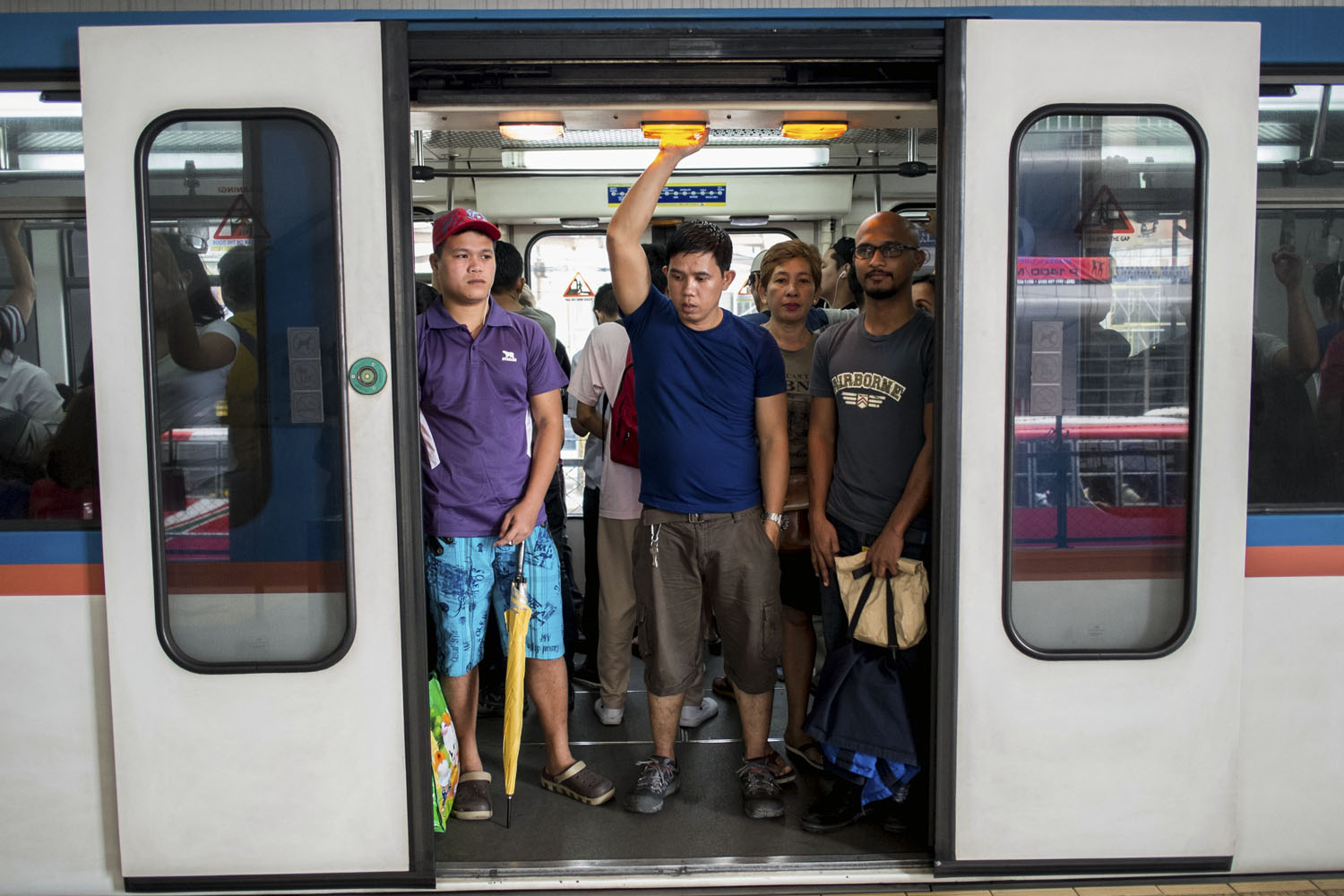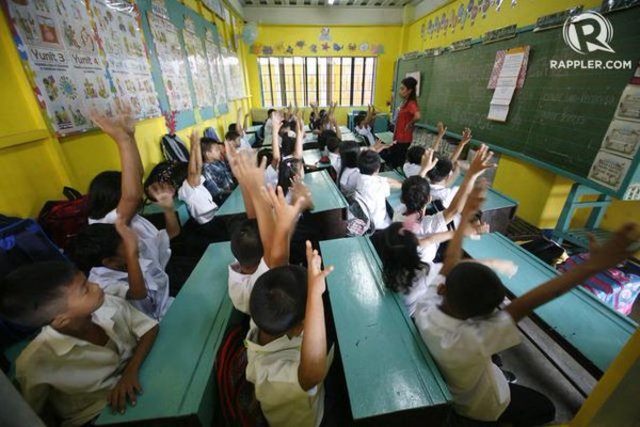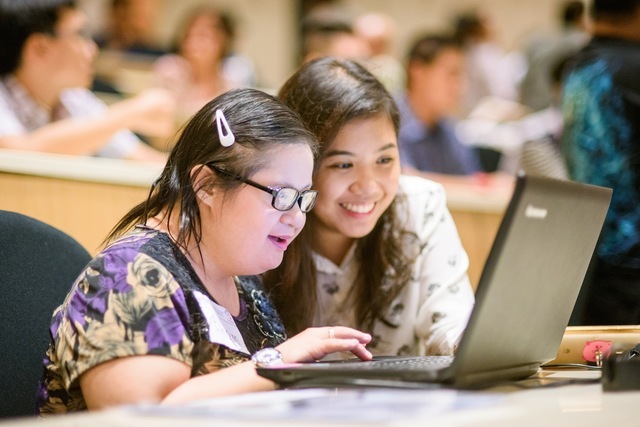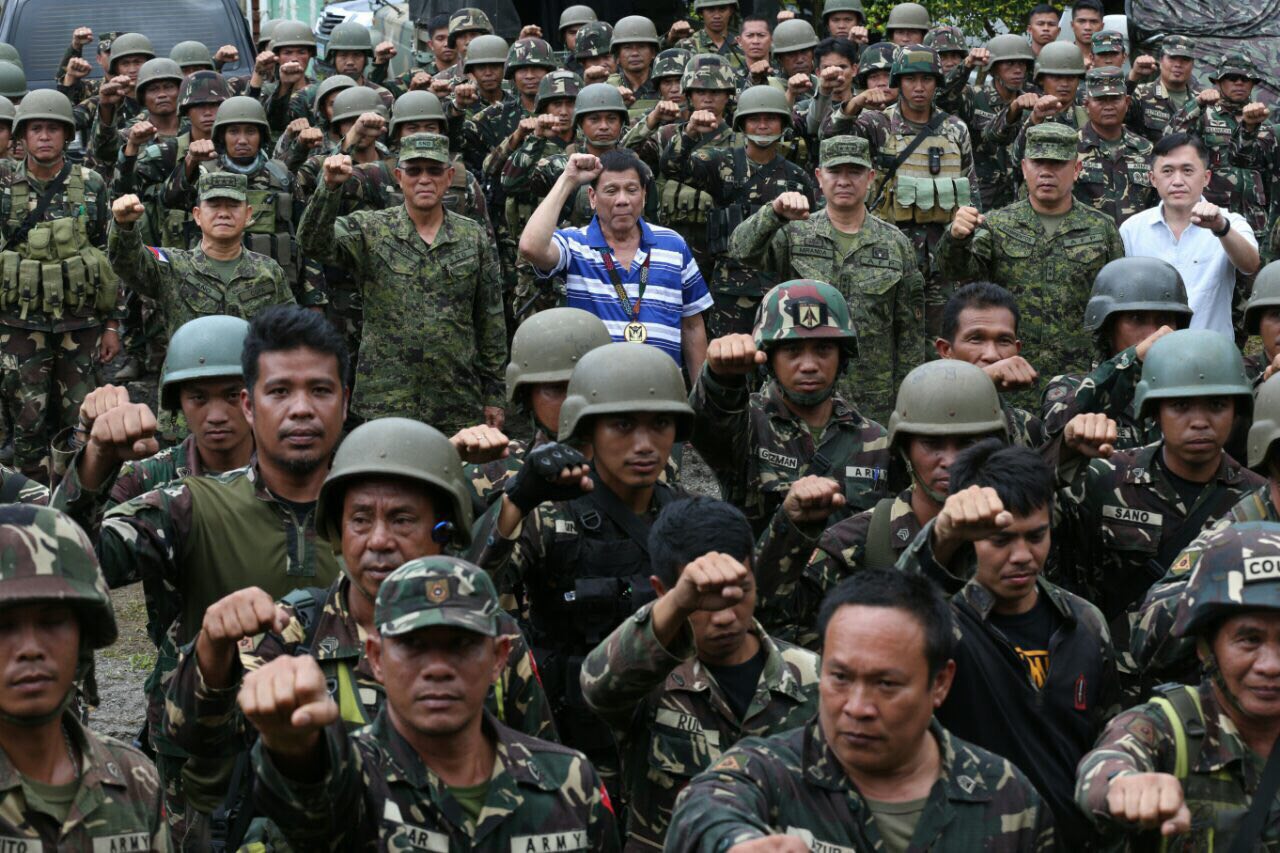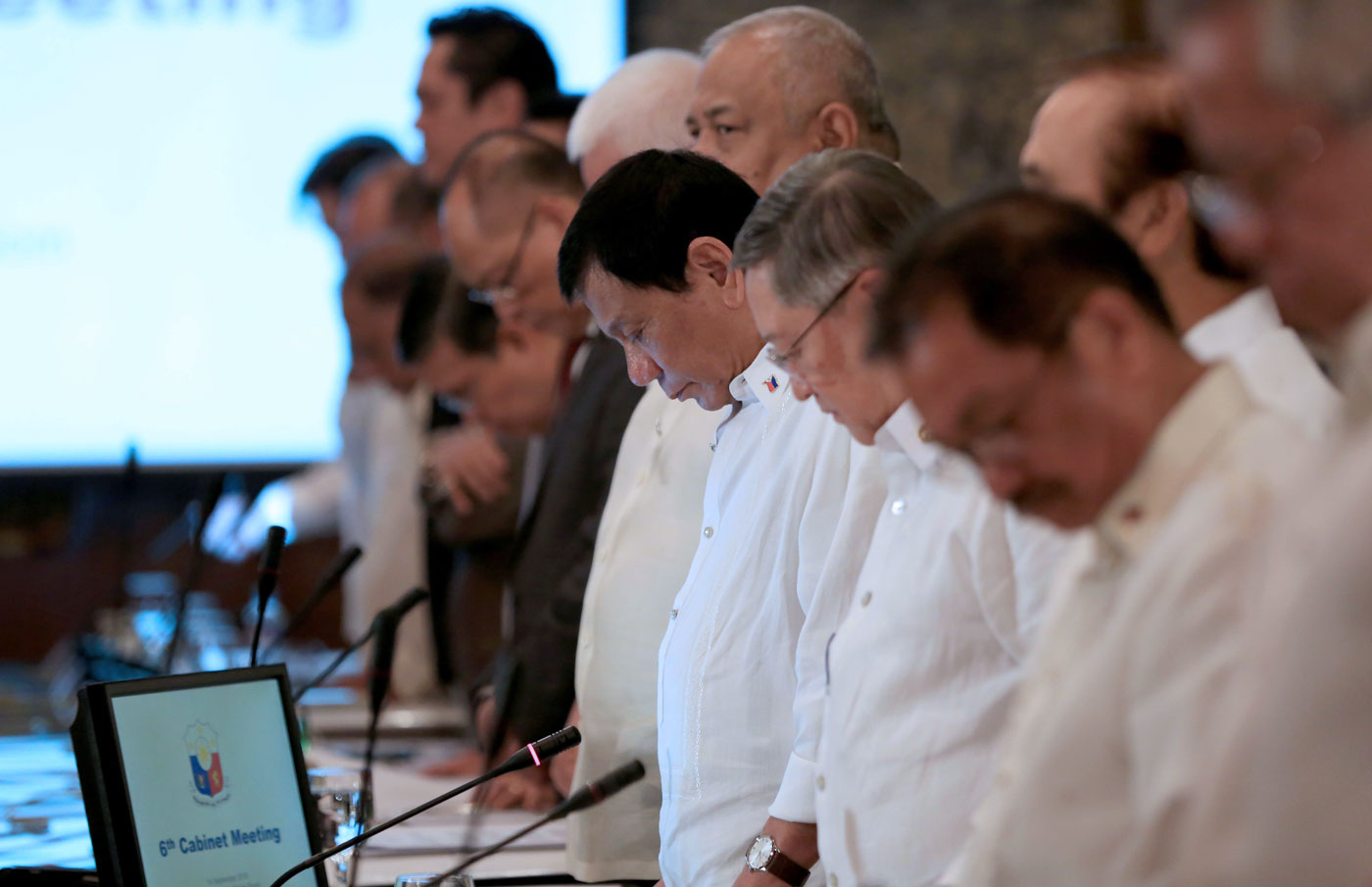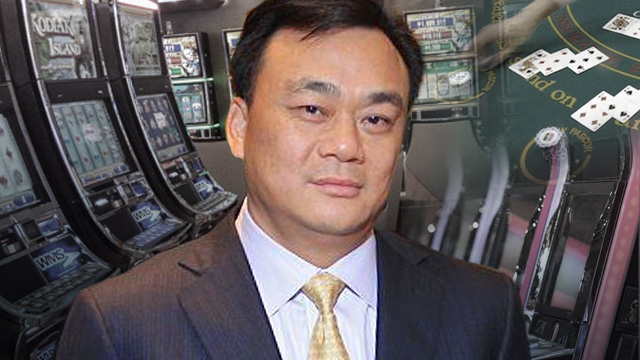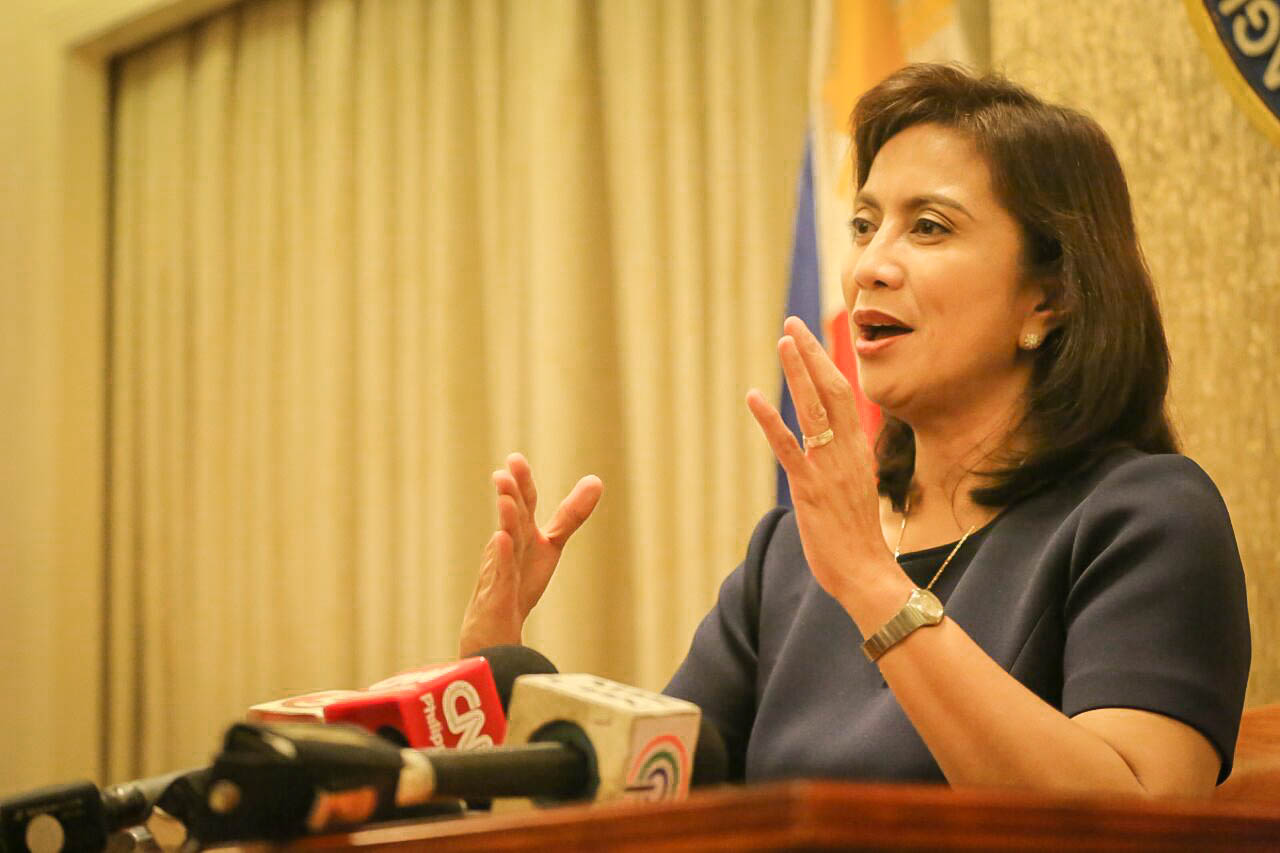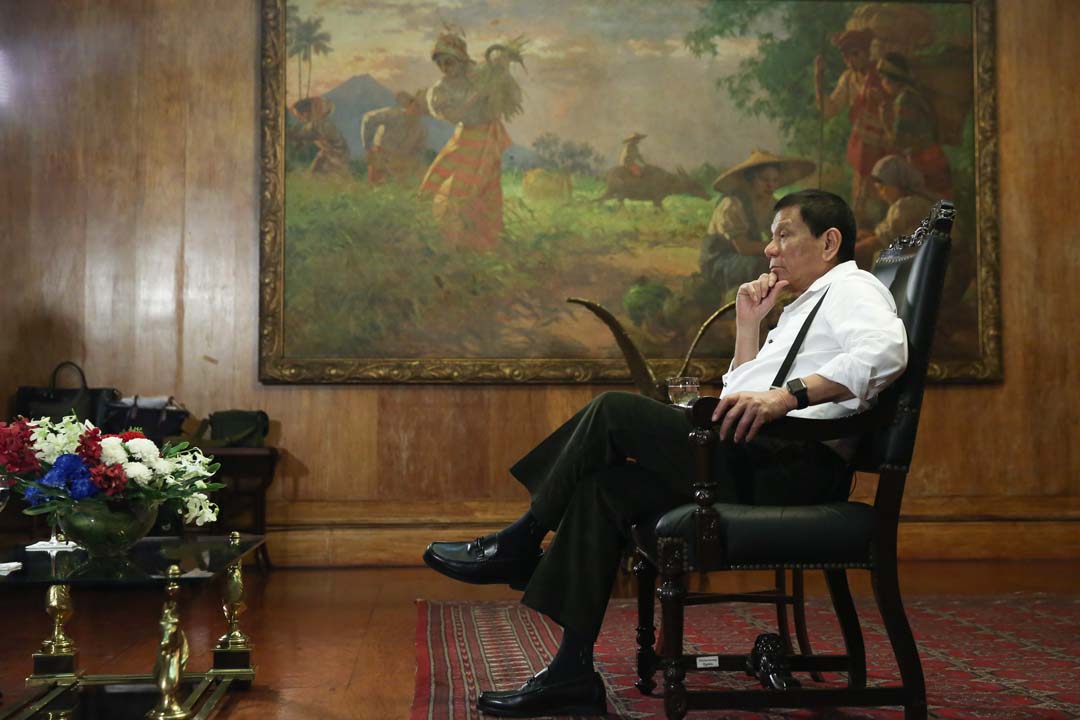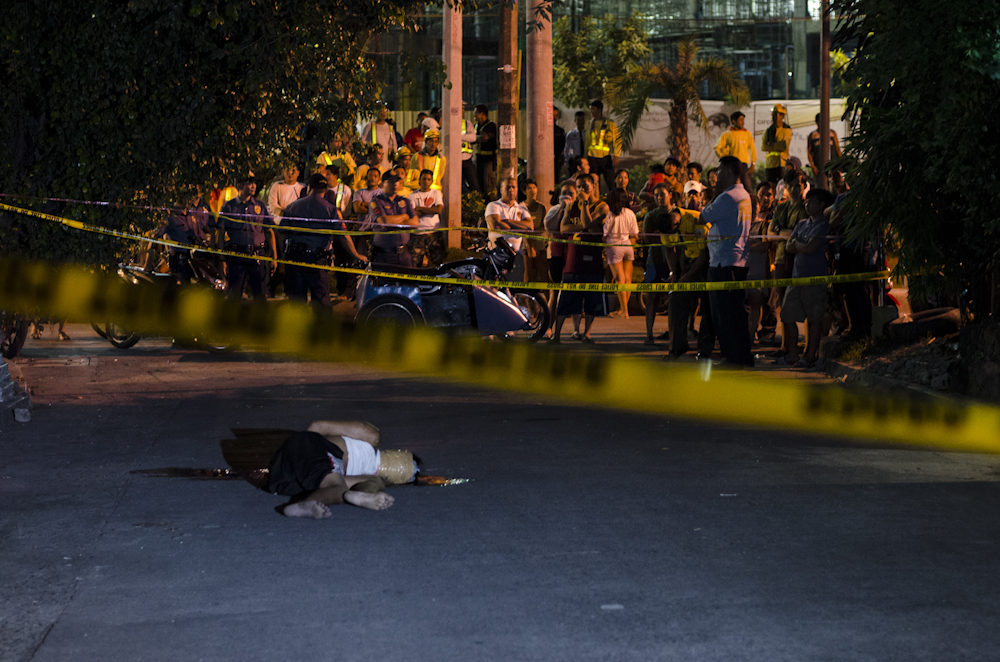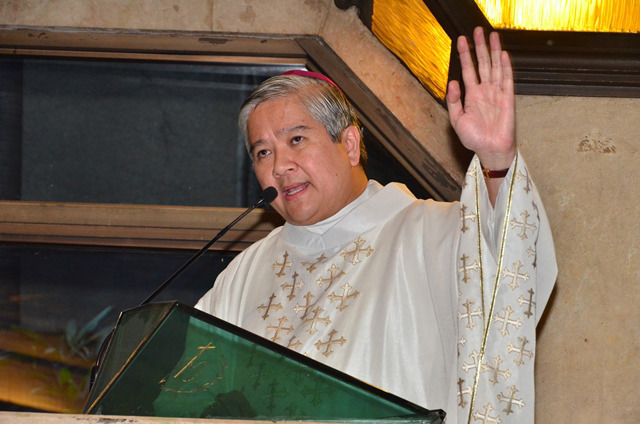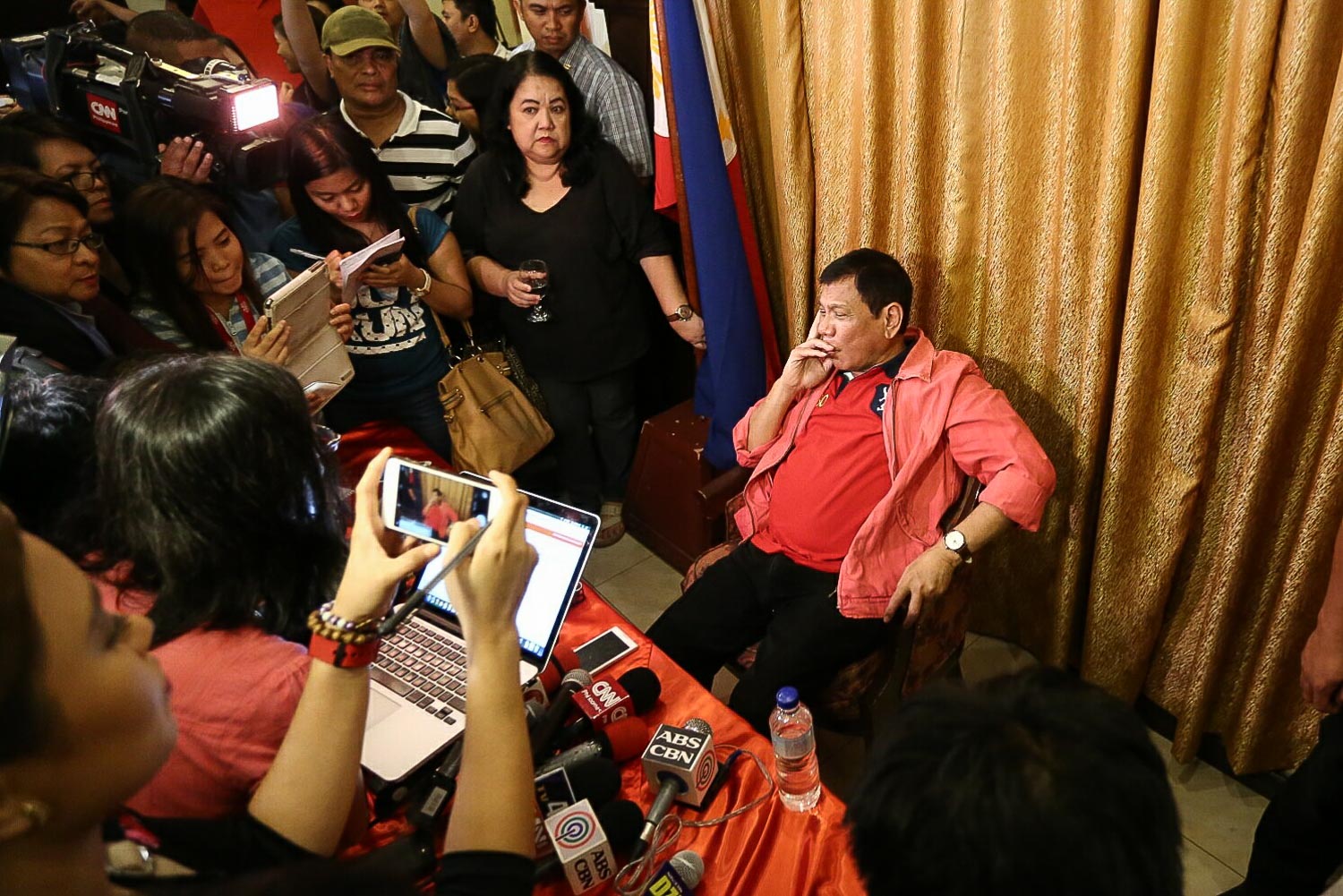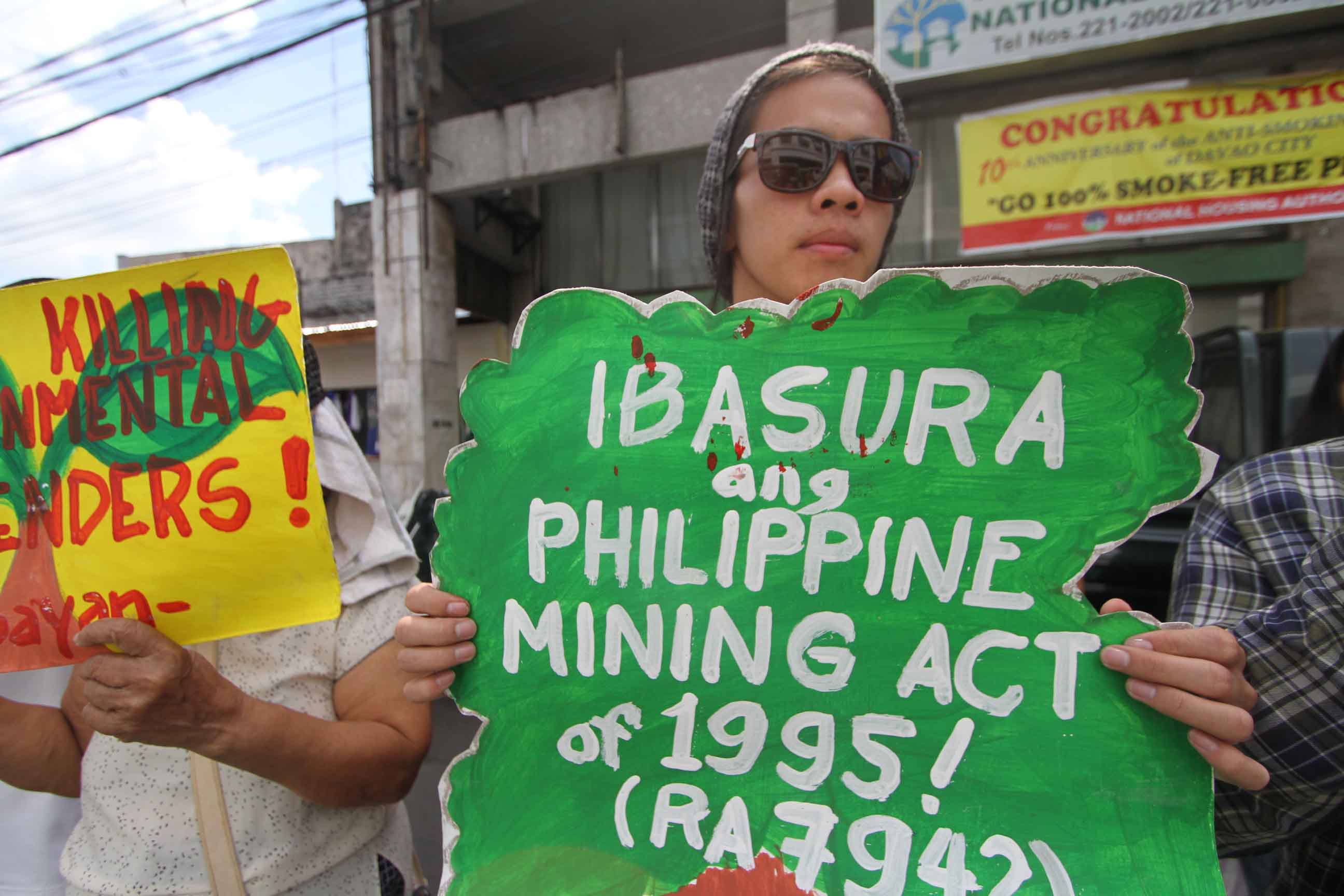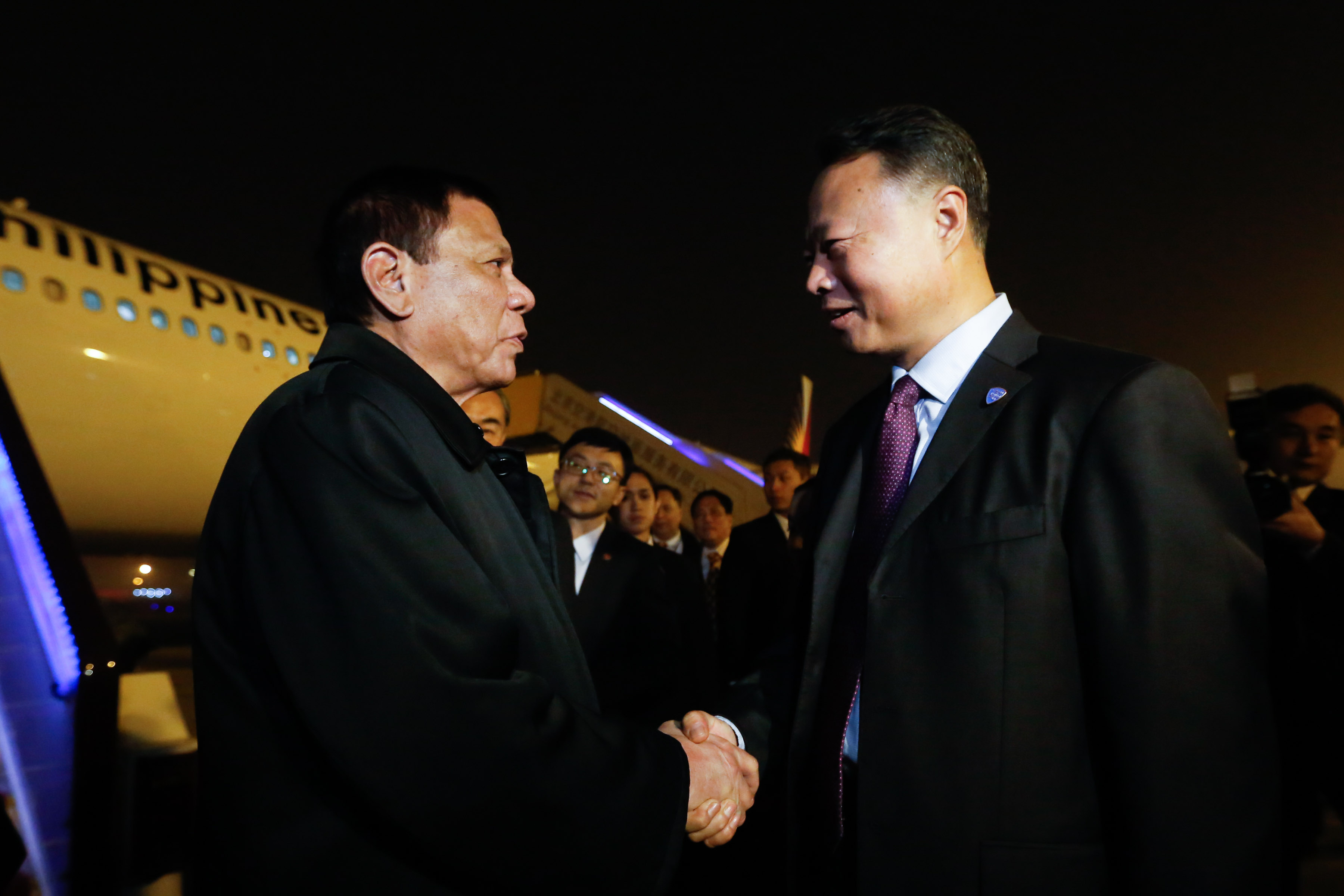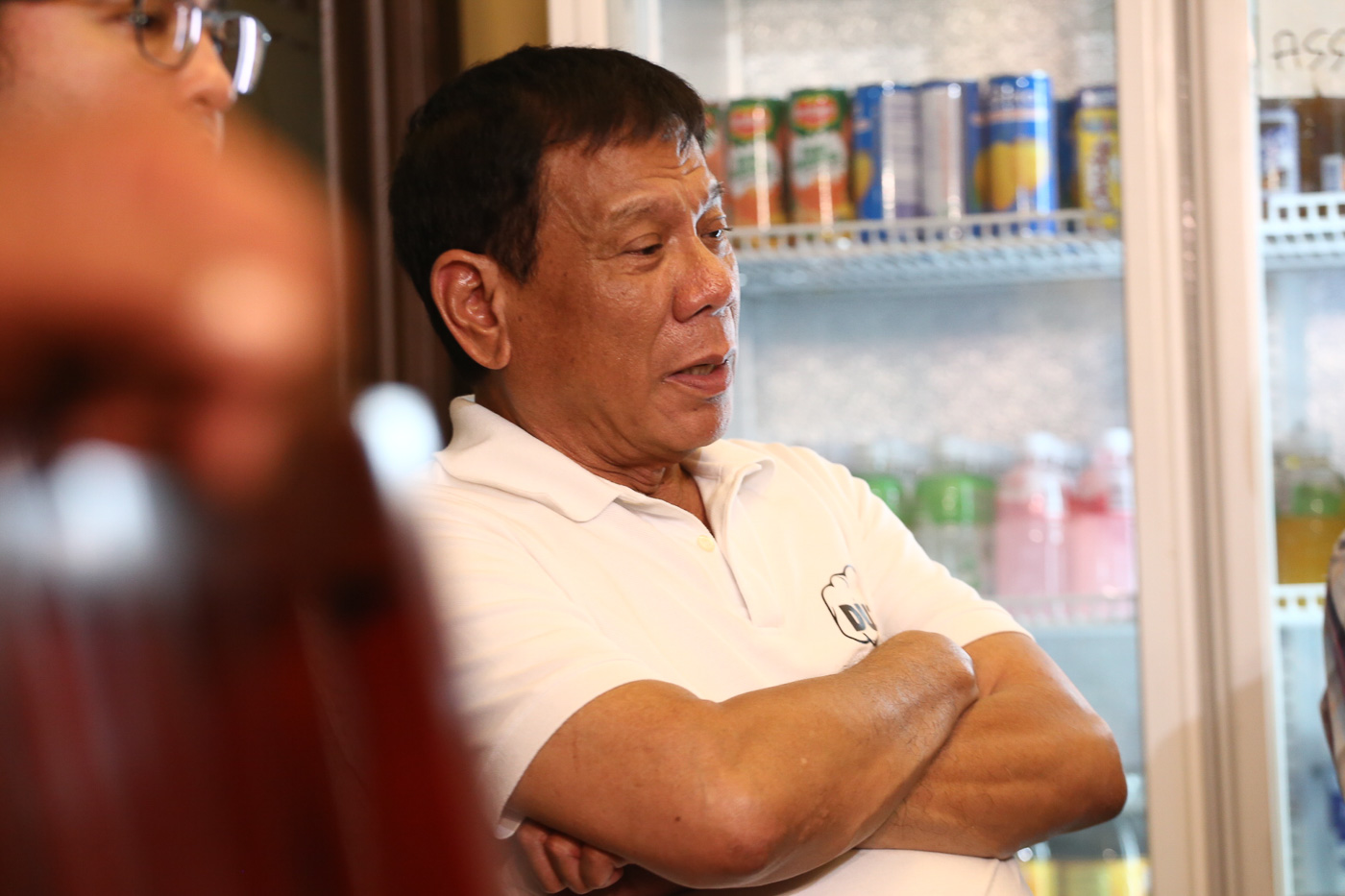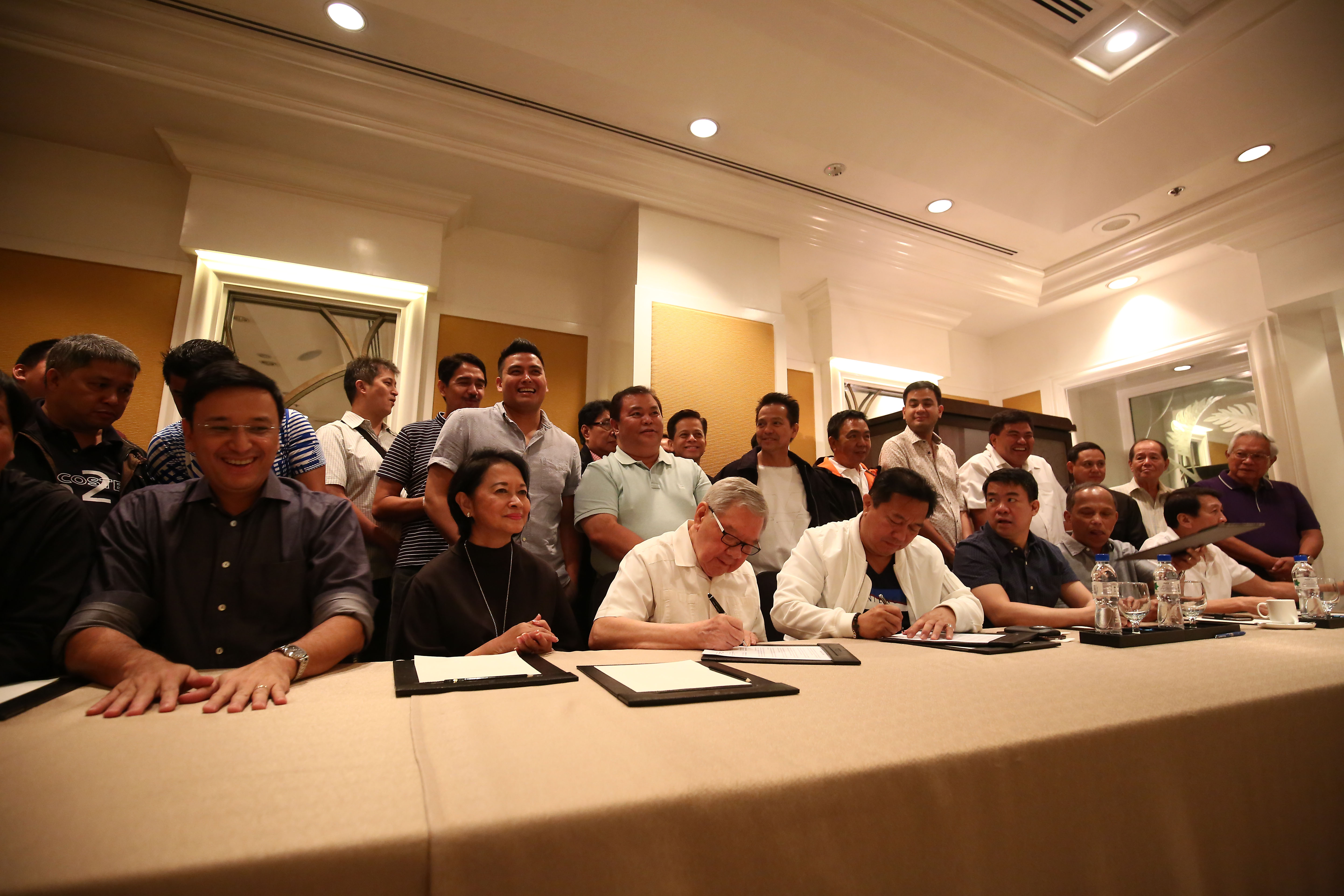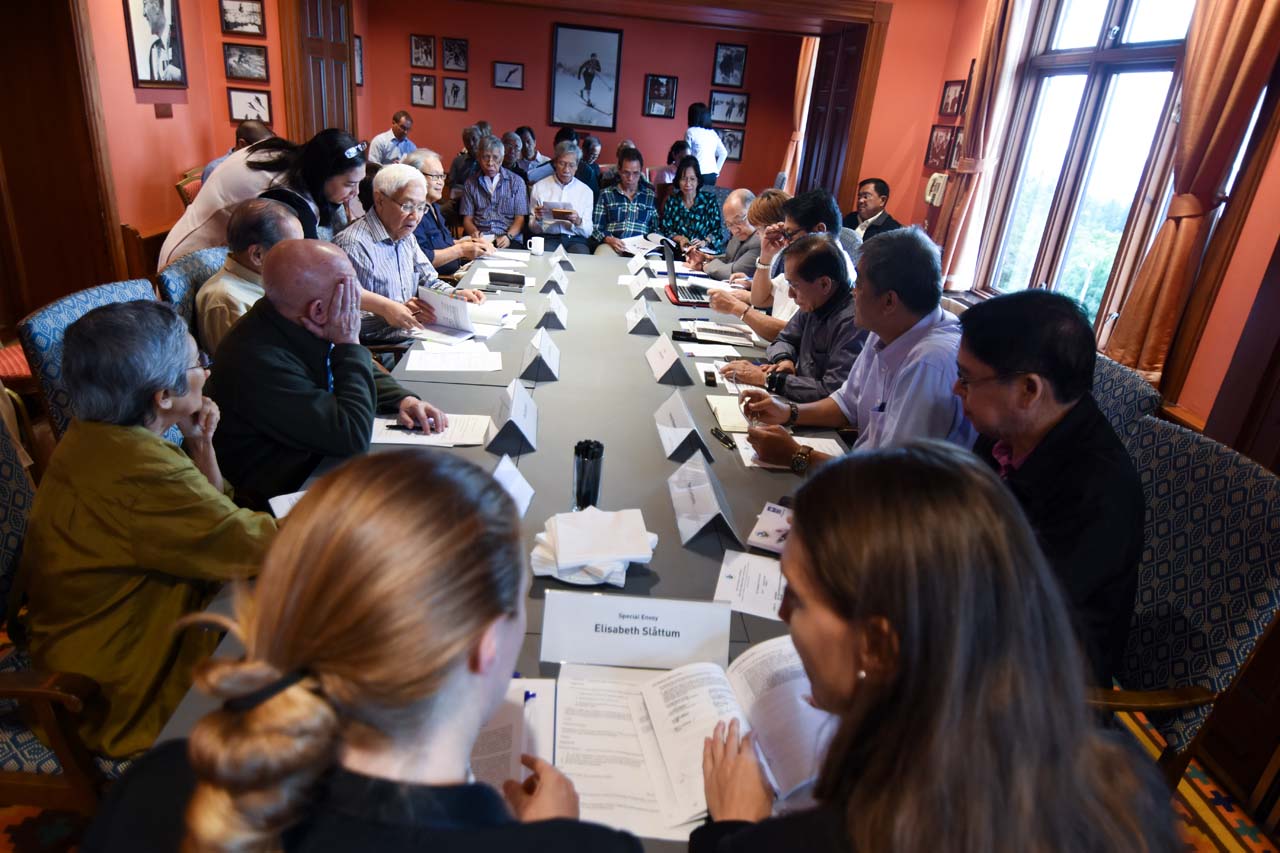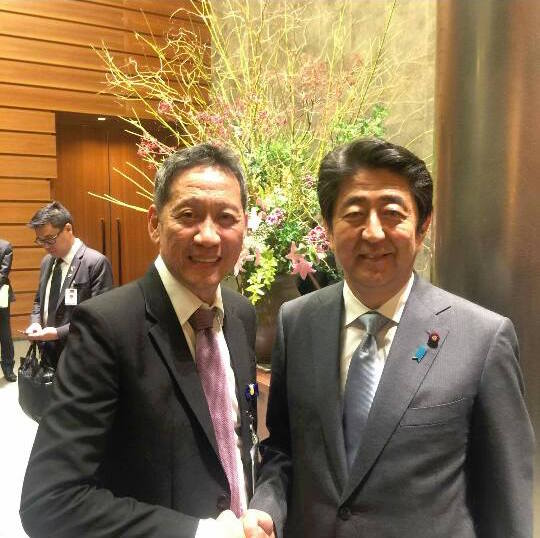MANILA, Philippines – Amid news headlines of the "war on drugs" or the President’s latest tirade, economic planners and sectoral experts are quietly working to achieve an equally news-worthy goal of the Duterte administration: eradicating poverty by 2040 and transforming the Philippines into a middle-class society.
Called Ambisyon Natin 2040, the government's long-term vision for development has been institutionalized by President Rodrigo Duterte through Executive Order 5. The “vision” was initiated during the Aquino administration, through the leadership of then National Economic and Development Authority (NEDA) Director-General Arsenio Balisacan.
The development plan was adopted by the new administration after intense lobbying among Duterte’s economic team. Leading its pack of supporters is current NEDA Director-General Ernesto Pernia, who contributed to the crafting of the Ambisyon Natin 2040 as an expert on population.
"Credit ought to go to the previous administration for thinking about having this long-term vision plan," said Pernia in an interview with Rappler.
"We said that we should continue this, we should carry this through because it's a good idea.... There's already an EO saying that the subsequent plans, the current administration's medium-term Philippine Development Plan, and subsequent PDP should be anchored on this vision," he explained.
Ateneo School of Government dean Ronald Mendoza is a big fan of continuity and thinks the Duterte administration should be given a medal for deciding to continue Ambisyon Natin 2040.
Continuity, he said, is the "key formula" to improving anti-poverty efforts.
"We will never be an industrialized country if we don't continue some good policies because then we’ll constantly be reinventing the wheel," he told Rappler.
Duterte wants Ambisyon Natin 2040 to be the basis of the Philippine Development Plan 2017 to 2022, which should be ready by end of January, said Pernia.
Ambisyon Natin 2040: 'By 2040, the Philippines shall be a prosperous, predominantly middle class society where no one is poor; our peoples shall live long and healthy lives, be smart and innovative; and shall live in a high trust society.'
If the Aquino administration succeeded in turning the Philippines into Asia’s new tiger economy, can the Duterte administration harness this success to attain the long-elusive prize of inclusive economic growth?
The stage is being set for the Duterte administration to contribute to the country's overall development trajectory.
'Imminently doable'
Eradicating poverty by 2040, or within the lifetimes of many adults today, is "imminently doable," said Mendoza, an economist who helped formulate Ambisyon Natin 2040.
![]()
To be a middle-class society, the Philippines needs to keep up or surpass its 7.1% economic growth rate for 24 more years, said Mendoza.
Can all those who are poor today level up to middle class in 24 years? Mendoza says it's possible if the government were to produce 1.3 million to 1.5 million jobs every year for the next 20 years – more than double the number of jobs the Aquino administration was able to generate yearly (607,500 on average).
"The rule of thumb is 6-7% growth yearly for every decade doubles your GDP per capita," he told Rappler.
Based on his calculations, 10 years of 6-7% growth could make the Philippine economy equivalent to Thailand's. Another 10 years, we can compare ourselves to Malaysia. A 3rd decade of such growth brings us to the level of South Korea.
Such calculations are underpinned by actual experiences of countries like China, South Korea, and Taiwan.
"China became China because of two decades of almost 10% growth," said Mendoza.
But for all Filipinos to support Ambisyon Natin 2040, economic growth must be that most cliché of cliché economic terms: inclusive.
The steady rise of economic growth during the Aquino administration did not stop hunger from worsening in the last quarter of 2015.
A woman in Ilocos region lives 12 years longer than a woman who lives in the Autonomous Region in Muslim Mindanao, proof that inequality is still pervasive in the Philippines.
Inclusive economic growth is the challenge facing the Duterte administration and the succeeding 3 administrations until the year 2040.
Duterte admin's hits and misses
To make this vision of 2040 happen, Pernia says the government's game plan is to implement the Zero-to-Ten Socio-Economic Agenda. It includes progressive tax reform, more investment in science and technology, and continuation of the Aquino administration's macroeconomic policies.
Five things must be done to make this vision of 2040 happen, according to Mendoza and Pernia. These are:
- Ensuring affordable food for all Filipinos
- Building infrastructure that connects us
- Continued human capital investment
- Doubling of job creation
- Full implementation of the reproductive health law
Affordable food
![FIGHTING HUNGER. A single can of sardines saves the day of a family in an urban poor community in Quezon City. Photo by Mark Saludes/Rappler]()
The Duterte administration should decide on how it wants to pursue food security. Does it stick with Aquino administration's goal of achieving 100% rice self-sufficiency?
Mendoza argues that continuing such a policy is "absurd" because, apart from spending billions on increasing rice productivity, it burdens consumers with expensive rice.
Agriculture Secretary Manny Piñol, however, is still determined to target 100% rice self-sufficiency.
Pernia said that Duterte's economic team is still trying to convince Piñol to tweak his goal. The country's chief economist believes that a certain level of importation is good for keeping rice prices affordable.
"We said, 'Why don't you just use the expression 'toward rice self-sufficiency' so it's just a target, an ambition, a vision rather than a necessity?" said Pernia.
Though Piñol is "hard-headed," Pernia said, "he listens, so we have to play golf with him so he will be convinced."
Piñoll initially asked for P62 billion for a rice self-sufficiency program. For Mendoza, an agricultural sector dependent on subsidies does not truly empower the farmer and only uses up government funds that could have gone to other programs.
Even with such funding, the Philippines will never be able to compete with top rice-producing countries like Vietnam and Thailand, blessed with natural irrigation in the form of the Mekong River. Philippine rice will still be more expensive.
The more "pragmatic" approach, said Mendoza, would be to maintain a certain level of rice self-sufficiency, but import enough to ensure the price of rice is affordable for even the poorest Filipino.
Meanwhile, the government should still help Filipino farmers by giving them the tools and know-how to grow more lucrative crops. When farmers make more money from cash crops and have more purchasing power because of cheaper rice, they are more likely to escape poverty.
Cheaper rice due to importation has an immediate impact not only on farmers but on all rice-consuming Filipinos.
"It can pay off immediately. We're not talking about years here. Next year, there will be a big drop in hunger and poverty just by more affordable food and more affordable rice," said Mendoza.
More affordable food also means workers are able to buy more with their salary. This takes off the pressure from companies to pay higher and higher salaries, convincing them to stay longer in the country to generate more jobs and income which are good for the economy.
There is a long-term impact to this as well.
Making sure no Filipino is hungry will provide the robust workforce and generation of competent Filipinos who are the country’s best chance of leveling up its economy.
Infrastructure that connects us
![METRO MANILA'S MRT3. The lack of quality transportation infrastructure holds back many cities and regions. Photo by Mark Saludes/Rappler]()
The Duterte administration is right to accelerate infrastructure spending. Infrastructure is one of the priorities in the proposed 2017 budget, having been allocated P860.7 billion ($18.49 billion), equivalent to 5.4% of GDP.
Pernia has said the government wants infrastructure spending to hit 7% of GDP by 2022.
Infrastructure should improve economic competitiveness, generate employment, and encourage business investments, he said.
More infrastructure will also contribute to more inclusive economic growth by connecting growth engines to the geographic peripheries that don't see much growth, said Mendoza.
Sixty percent of GDP is generated by only 3 regions in Luzon, showing how much the Visayas and Mindanao have been left behind.
Infrastructure can strengthen growth engines in the Visayas like Cebu, or Davao in Mindanao, so that Filipinos in those regions flock to those cities instead of to Metro Manila.
At the same time, infrastructure can connect those 3 high-growth regions in Luzon to the rest of the country, spreading growth more evenly.
Duterte's term is the right time to boost infrastructure spending, thanks to the credit rating upgrade the Aquino administration achieved.
In the past, said Mendoza, "We did not have the money to do it nor the credit upgrade to do it. Now we have it. So what are we waiting for?"
Continued human capital investment
![COUNTRY'S FUTURE. The Department of Education aims to continue addressing the shortage of classrooms in the Philippines. Photo by Ben Nabong/Rappler]()
The Duterte administration is right to continue 4Ps and K to 12, said Mendoza.
In fact, Pernia said the government plans to expand 4Ps: "We are ramping up the budget so that more poor families can be covered."
The Aquino administration's conditional cash transfer program, 4Ps, is credited for bringing down the poverty rate from 25.2% in 2012 to 21.6% in 2015.
The Duterte government's target is to further reduce poverty rate to 14% by 2022.
Studies by the Ateneo School of Government show that 4Ps, in which the government gave poor families a stipend for education and health, convinced households to invest more of their own money into the education of their child.
Government support pushed families so near the threshold of being able to afford better education for their kids that they decided to add more of their own money in order to reach the threshold, said Mendoza.
Research has also found that some households have used the cash from 4Ps to put up small businesses.
That said, there is much room for improvement in implementing 4Ps, which has been bogged down by delays in distribution, owing to the sheer difficulty of bringing aid to households in remote areas.
K to 12, though the subject of much grumbling from parents burdened by paying for an extended education cycle, also contributes to Ambisyon Natin, said Mendoza.
Mendoza believes that the additional years and better quality education promised by K to 12 could help high school graduates land better jobs than the previous 10-year cycle could.
Continued support for healthcare programs, with help from sin tax, is yet another way the Duterte administration can protect the country's most valuable asset, human capital.
Doubled job creation
![JOB GENERATION. Users try out a job matching site for persons with disabilities. Photo by Project Inclusion/Unilab Foundation]()
The Duterte administration is right in supporting micro, small, and medium enterprises (MSMEs), said Mendoza.
Strong MSMEs generate jobs and are an incubator for innovation. Nothing enlivens an economy more than homegrown products selling like hot cakes both in national and international markets.
Duterte tapped an MSME advocate, Go Negosyo’s Ramon Lopez, to head the Department of Trade and Industry. He's been busy putting up "Negosyo Centers" all over the country (307 established as of September 22) to bring government support closer to would-be entrepreneurs in different provinces.
The DTI is also trying to help give MSMEs better access to lending institutions so they have more capital to grow their businesses.
Duterte's foreign visits also bode well for MSMEs. In China, credit facilities signed a deal to provide $9 billion in loans for Philippine businesses, development projects, and infrastructure projects. In Japan, there was an exchange of notes on the planned loan from the Japanese government for Philippine agribusinesses.
Mendoza thinks the Duterte administration can go even further by creating new financial instruments where Filipinos who want to grow their money (OFWs, for instance) can park their money and the instrument invests their money into promising MSMEs.
This would help the economy more than, say, Filipinos investing in cars to drive for Uber. The financial vehicles could channel the money into traditionally marginalized sectors like agriculture and fisheries, thereby creating more jobs and opportunities all around.
"If they crack that code and bring in the private sector and leverage the larger monies of the private sector, then our economy will be structurally more inclusive," said Mendoza.
Full implementation of RH law
![POOR MOTHERS. Some mothers have difficulties getting gainful employment, while also fulfilling their family duties. Photo by Noel Celis/AFP]()
Uplifting Filipinos from poverty by 2040 will be impossible if rapid economic growth is not complemented by the full implementation of the RH law, said Pernia, an expert on population.
Without this, population growth "will continue unabated so it will be more difficult to achieve the poverty reduction target," he said.
When families aren't able to limit their number of children, their income is stretched thin, making it more difficult for them to reach middle-income status.
Pernia also believes implementation of the law will free up more women to join the labor force and help bring in more income for their families.
"Women who are frequently pregnant cannot undergo training or continue their education that will enable them to join the workforce. The labor force participation of women is very low precisley because of pregnancies," he said.
In Ambisyon Natin, the goal is for families to triple their income by 2040. So a family of 4 earning P40,000 a month today should be earning P120,000 by 2040 – an amount enough for them to afford not only basic necessities but also luxuries like the ability to travel for leisure.
Will the Duterte administration and the 3 succeeding administrations turn dreams into reality?
Mendoza is optimistic that the country is at least on the right track.
"We are so far away from that future at this point but we are building toward it block by block," he said.
Pernia gave assurances that the government will measure progress regularly using a set of metrics and indicators.
The upcoming PDP 2017-2022 will contribute with its emphasis on spreading economic growth to all parts of the country.
While the Aquino administration "did very well" in macroeconomic policies, the Duterte government will focus on spreading that growth.
"Our emphasis now is to shift the focus to the rural areas, to agriculture, because that is where the poverty has been chronic," said Pernia.
But the plan needs the help of all Filipinos, not just government.
"I hope it will not make peope complacent. We have to work on it. It's going to be hard homework for everybody," he said.
If everyone does his homework, the one-fifth of the population still impoverished have much to look forward to. – Rappler.com
![]()
